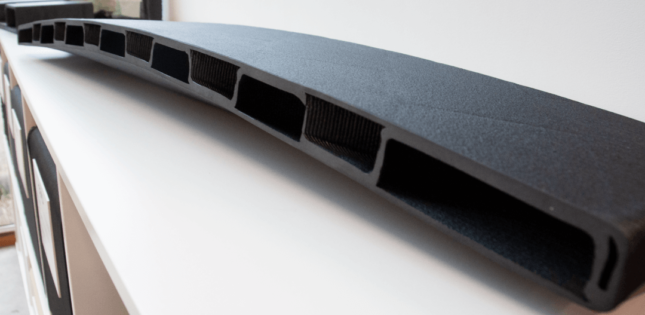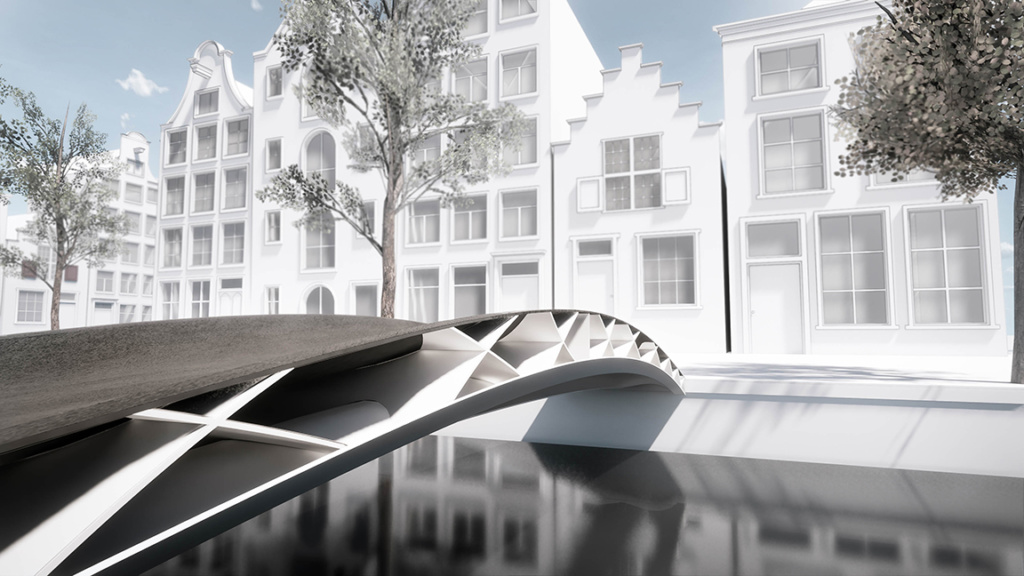Three Dutch organizations—the materials company DSM, the engineering firm Royal HaskoningDHV, and the 3D printer manufacture CEAD—have teamed up to create a printer capable of printing continuous glass- or carbon-fiber-reinforced thermoplastics. Currently, they are demonstrating the capabilities of printing structural elements, and even, they hope, entire pedestrian bridges, with CEAD’s CFAM Prime printer which can create parts as large as 13 feet by six-and-a-half feet by five feet.
While formwork molds have previously been created by large-scale printers and then used in turn create structural parts, this is one of the earlier examples of the potential of 3D printing to create large polymer structural elements, and, possibly, entire bridges.
The firms say that combining polymers with continuous fibers allows for the construction of lightweight, high-strength elements ideal for infrastructure solutions, and while other 3D printed building materials have run into trouble when it comes to cold temperature and exposure to the elements, the designers hope that these fiber-and-plastic combos can weather storms as well as any traditional building—though it remains to be seen if these 3D-printed elements would be able to address the brittleness problem sometimes faced when plastics are used for larger structures.

Maurice Kardas, the business development manager of Royal HaskoningDHV, told 3Dprint.com that “fiber-reinforced plastic bridges have been known for their long life spans and lower overall costs in comparison with steel bridges. Now we will be using a new 3D printing technology which lets us at scale make fiber-reinforced plastic parts. through adding sensors to the bridge we can make a ‘digital twin’ of the bridge itself. these sensors can predict and optimize maintenance, ensure safety and lengthen the life span of bridges.”
While the team cites sustainability as a possible benefit—noting the polluting nature of concrete—these forms still rely upon plastics, in this case Arnite which is a rigid PBT or PET. Composites like these remain notoriously difficult to recycle, and are often petroleum-based. Still, additive manufacturing processes often produce less waste, take less time, and hopefully, will offer durability advantages over other existing processes.



